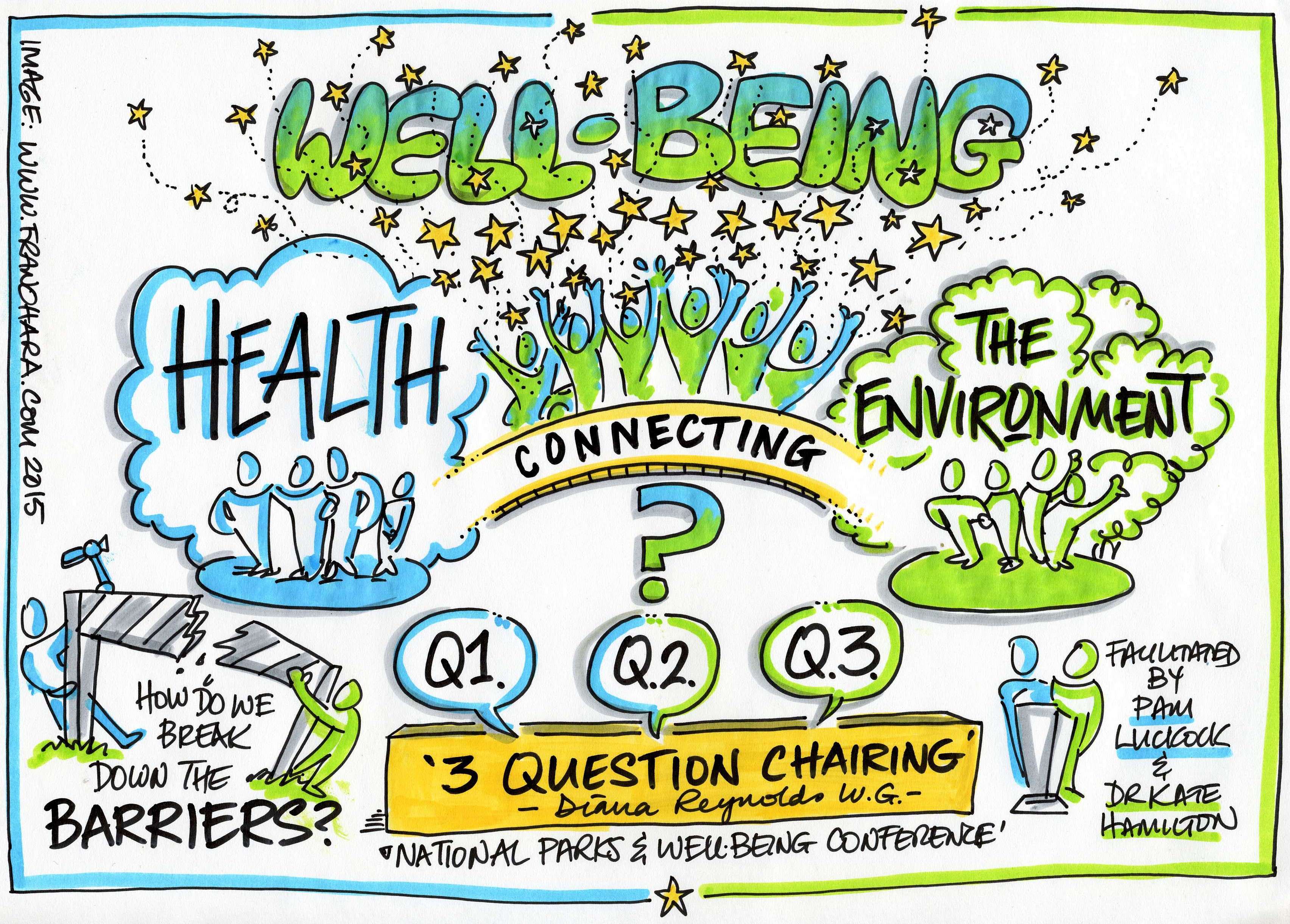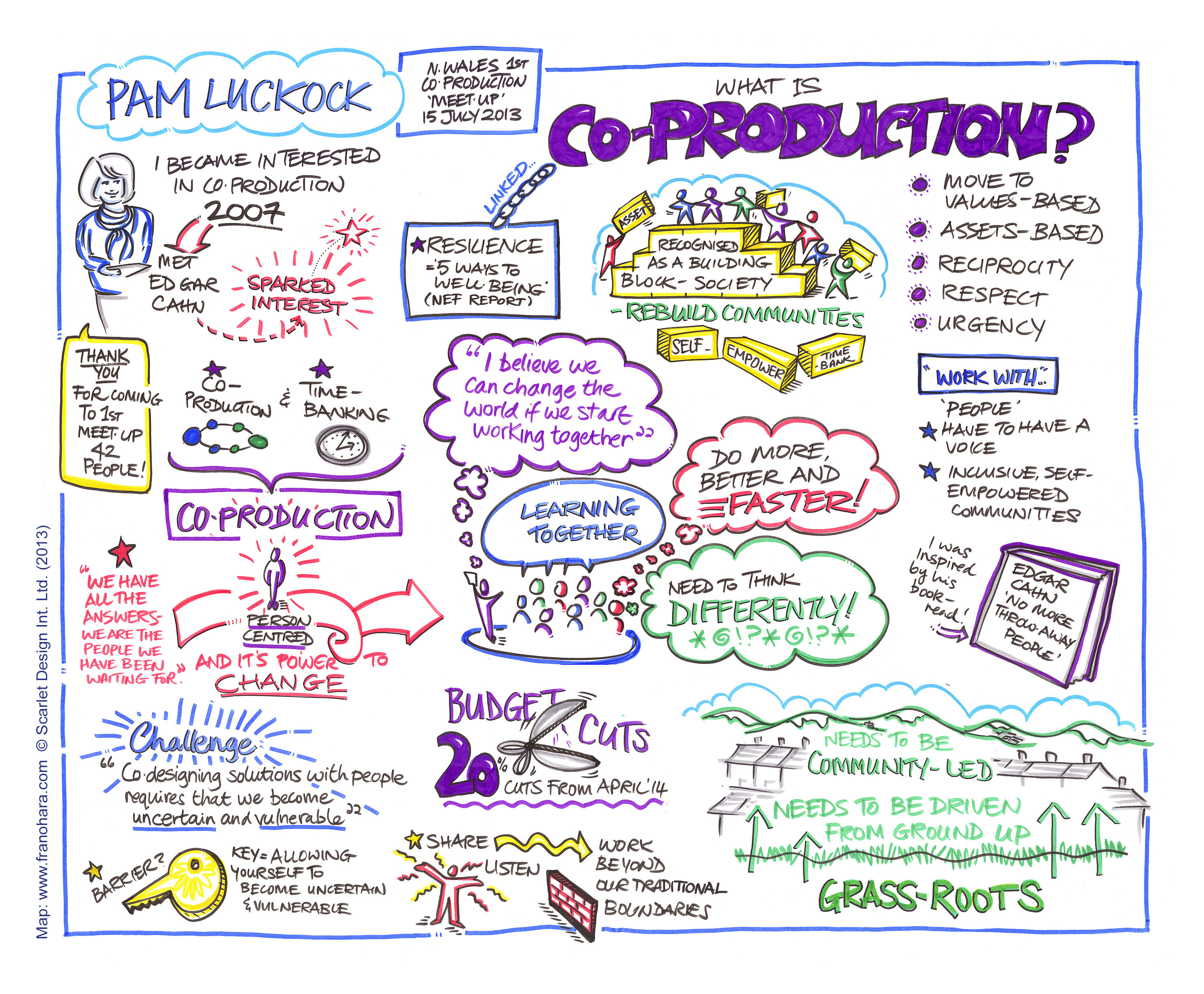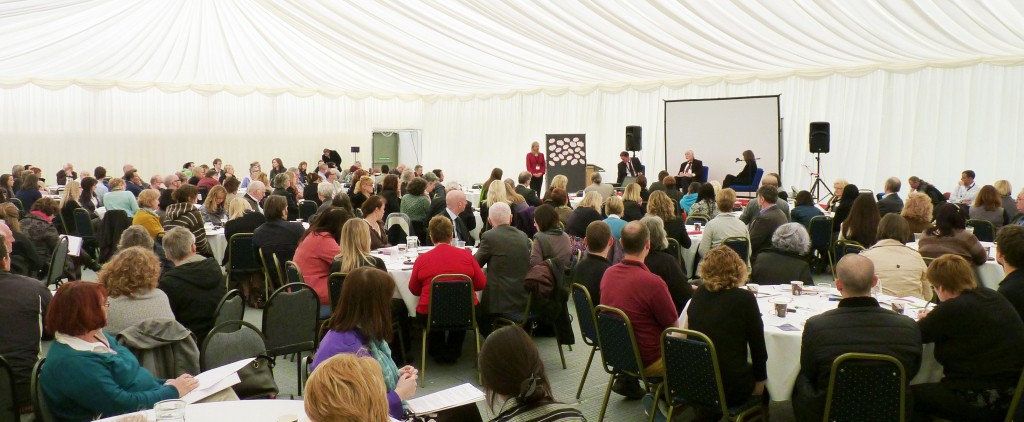2014 was the year when many big “conversations that matter” were hosted across Wales. Fran and I were privileged to be involved in many of these and it was against this backdrop that I found myself in the heart of the beautiful Snowdonia National Park on 21st April.
Co-hosting a session at the National Parks and Wellbeing conference
The aims of the National Parks and Wellbeing conference were to discuss and to share knowledge, evidence-base and case studies which link human health outcomes with National Park objectives; recreational and educational use of the outdoors; wildlife gardening and biodiversity.
I’d met with Dr Ambra Burls in Autumn 2014 to support her plans for the second National Parks Health and Wellbeing conference 2015. I was able to share some of the insights gained from our 9 coproduction meetups and other conversations. I also recommended she invite Diana Reynolds, Welsh Government, to demonstrate her “Three Question Chairing” method at the conference. Diana and I had successfully used this method to co-host two WWNT ‘mini meet-up’ ‘Co-production, Primary Care and the Environment conversations.
A few days before the start of conference call from Diana asking if I could step into her shoes to co-facilitate the three question chairing workshop with Kate Hamilton… This was an exciting opportunity to discuss in more depth how health could connect with the national parks, and with the environment. A theme Fran and I had seen emerging in many areas of our work, and the link with improved wellbeing, which was reflected in the conference’s purpose:
- How can we help National Parks (and also Areas of Natural Beauty-AONB, Protected Areas, Town Parks etc.) develop a full consciousness and proactive will to be health & wellbeing providers/resources/green prescriptions agents?
- How can we help Health providers to develop a full consciousness & proactive will to ‘allow’ National Parks (+others) to become legitimate health resources & green prescriptions agents?
- How can we help the two sides develop trust and engage with one another to develop that consciousness?
So…. what is three question chairing?
Diana first mentioned this new (co-production) method, that she was trialing within Welsh Government departments to chair meetings. It resonated with my training in World Cafe conversations and its approach to dialogue – inclusive conversations resulting in actions! (more of this in a future blog)
Diana described it as “a way of increasing focus, effectiveness and practical outcomes for any meeting. The chair (convenor or facilitator) simply asks three, well prepared, questions.
Question 1: The aim of question one is to start the conversation, deep in the middle and with good listening. Each person in the room is invited to introduce themselves by answering this question, starting with whoever is ready first.
Question 2: The aim of question two is to deepen our joint understanding of the topic on which we need to make decisions or take action.
This is a specific open question to everyone in the room… Other questions/ answers will develop during this stage of the conversation. Make sure quieter voices are invited to join in.
Question 3: The aim of question three is to bring us back to action.
Once everyone has decided what they will do together, you may want to ask one more question; How will we invite others to join in?
Connecting health and the environment
Day one of conference arrived and it was a beautiful clear blue sky morning as I drove to Maentwrog. The session went really well, we focused on these 3 questions:
Q1. What inspires you to do the work that you do?
Q2. What is holding me back and how can we help each other overcome these barriers?
Q3. What new habit can I nurture in myself
… and if time allows: What new habit can I help others to nurture?
What stood out?
@Fran_Ohara asked me if I’d had any insights from our session and my 2 days at the conference… a few things stood out
- There’s no shortage of passionate people, excellent ideas, great projects that deliver and provide evidence of wellbeing outcomes
- There was an absence of delegates from the health sector
- What struck home was that greatest challenges remain in finding effective ways to join-up / work across / work between different sectors.
- Many of the conversations alluded to the difficulties associated with creating successful collaborative working, building relationships and partnerships etc…these continue to raise real barriers to effecting change.
- A recurring theme during the conversations was the need to find effective ways to re-direct funding. The ‘Green Prescriptions’ example from Scotland provided a useful model to examine how this was achieved.
What’s next?
I heard many excellent presentations from as far afield as Australia and Sweden however the highlights for me were:
- hearing GP, Dr James Fleming, talk about how he set up the Green Dreams project at his general practice in Burnley and which has now spread to 17 other practices.
- meeting Kevin Lafferty, Forestry Commission Scotland+NHS Scotland, whose presentation “Green Prescriptions” shared four partnership projects including ‘Branching Out’ green space and conservation on referral, and a woodland activity programme for people living with early stage dementia.
- Ed Rosen sharing ideas from the Lambeth GP food co-operative, a food growing project.
I’m delighted to say that they’ve each accepted an invitation to return to Wales to join one of our future WWNT ‘Meet-Ups’ – so watch out for announcements!
My main ‘take-away’ was that the environment projects highlighted great wellbeing outcomes yet many struggled to find ways to fund, spread and sustain these innovative cross sector initiatives. It feels an important conversation to host. What do you think? Be great to have your thoughts about this.
Pam Luckock, Director, ‘Working With Not To’ Coproduction Project.



